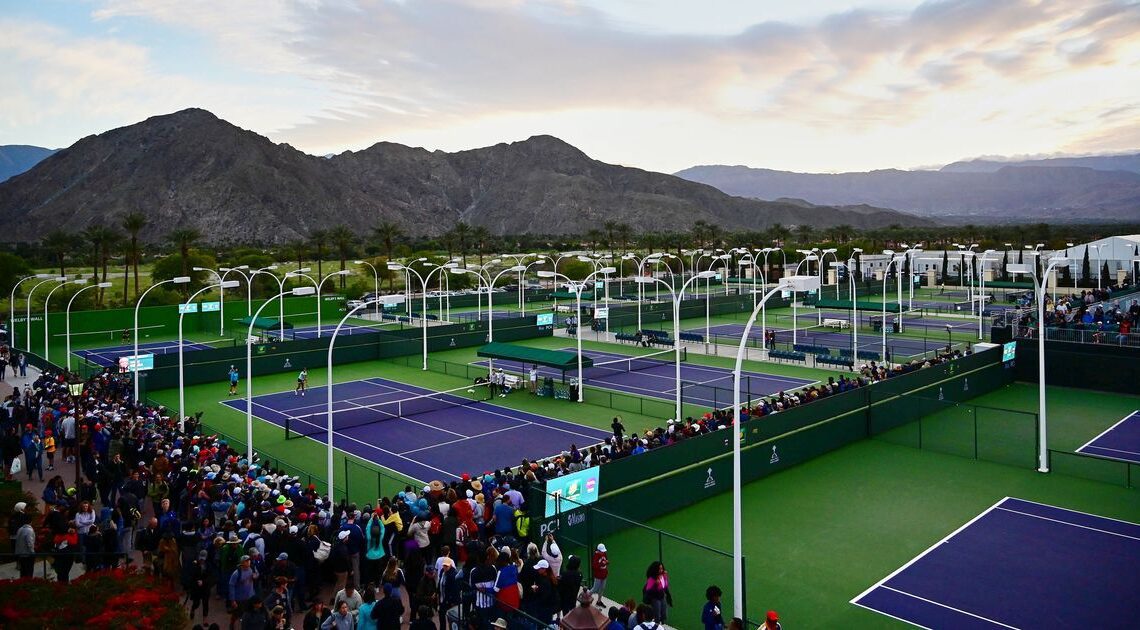INDIAN WELLS, Calif. — It was just past 9 Monday morning when the supervisor spotted something amiss in the players’ dining lounge.
“The condiments,” he said, addressing one of his workers, “are randomly placed. See if you can pull them together. Everything has to look … great.”
A little later, a player and her mother were standing outside the restricted player area.
“She can go through,” the gate-keeper said to the mother, “but your credential doesn’t allow you. It’s not that we don’t love you.”
That small sentiment turned the mother’s spreading scowl into a smile — just another example of the BNP Paribas Open’s attention to detail. These and thousands of other touches — both substantial and subtle — combine to make the Indian Wells tournament a perennial favorite of the players, patrons and sponsors.
When Maria Sakkari revealed in the recent Netflix series “Break Point” that she sometimes consumed six cups of coffee in a single day, event organizers placed a DeLonghi espresso machine in the house she was staying locally.
“They did, yes,” Sakkari said before the tournament. “It’s good, very good, and very kind of them. They thought of my passion — and delivered.
“From the way people treat us in the locker rooms to the transport staff, any place you go, they’re very kind, very helpful. I just feel like it’s a tournament where everyone gets treated really, really well, regardless of ranking. There’s actually a reason why it’s called tennis paradise.”
‘You feel the energy’
It’s not just a marketing slogan — it’s actually true. The BNP Paribas Open is considered by many to be the fifth Grand Slam.
Under the guidance of Charlie Pasarell, a college national champion and No.1-ranked American, the tournament began in 1974 in La Quinta. It soon moved to the Grand Hyatt in Indian Wells, where the men’s tournament preceded the women’s. In 1996, it became one of the first combined events for the WTA and ATP Tours.
Four years later, investors came together with $77 million to produce the current facility, whose centerpiece was a 16,000-seat stadium. In 2009, Larry Ellison, the Oracle co-founder, bought the tournament and has continued to pour resources into the event, most notably Stadium 2, an 8,000-seat arena — as well as a signature Nobu restaurant.
When Tommy Haas first arrived in the Coachella Valley as a player, in 1995, his reaction was, “Wow.”
Now a…

